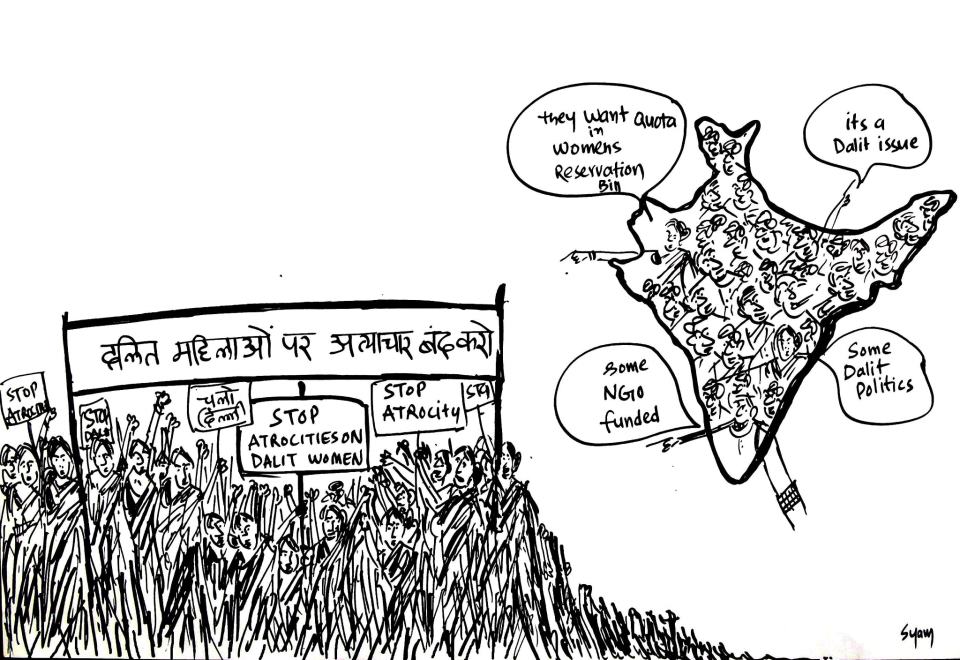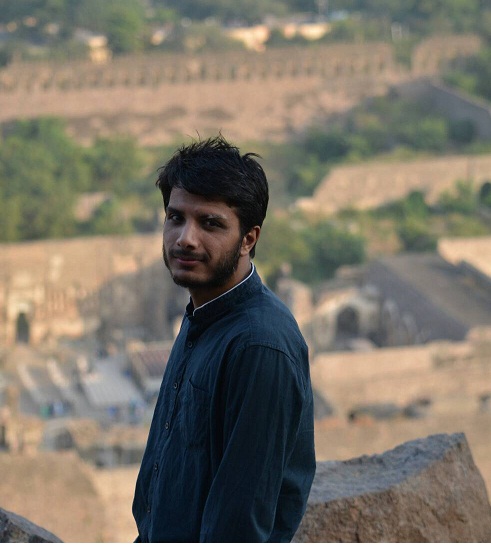Asha Kowtal
My recent association with campaigns resisting violence against Dalit women has brought me in contact with several individuals, groups and organisations that represent diverse perspectives and histories. Broadly it includes groups which have been advocating ‘gender justice’ and others who have been battling the cruelty of the caste system in India. The reality is that these world views and ideological positions have greatly influenced the trajectories of collectives in this fight for justice – both for women and for communities that have been discriminated against for centuries.
There is a difference between the two and can perhaps be understood with further nuanced reflections of experiences.
Swimming in the murky waters that lay in the intersections of caste and patriarchy has been the biggest challenge for young Dalit women activists who are struggling to put an end to caste based gender violence, untouchability and all forms of discrimination. On one end of the spectrum, as women, we (hesitantly) look for allies amongst the men and women holding the banner for a gender just world and on the other end of the spectrum we strongly associate with our own men folk and women in the anti-caste struggles.

During the National Tribunal – Violence against Dalit Women, scores of brothers, uncles & husbands of the Dalit women survivors of violence deposed before the jury sharing their experiences with the various barriers they faced in accessing justice. Since, the incident/s of violence, many of them were threatened and intimidated by the upper caste perpetrators. Withstanding the severe pressure for compromise, they were still fighting for their own women. Fighting to restore the dignity and rights of the entire violated community.
As women involved in the planning and facilitation of this Tribunal, we learnt a lot. More than any textbook could ever teach us. We experienced the pain of a father who lost his livelihood and was living in fear; but diligently following the legal process to seek justice for his daughter, a survivor of sexual violence. We shed tears and experienced the helplessness along with the husband of the Dalit woman who was paraded naked in her village. They poignantly said, ‘. . . swords and guns would be used to unleash violence and there would be bloodshed in our village if this had happened to a Rajput/Yadav woman. But since it was done to an untouchable woman … we often weep together and console each other.‘
We learnt that the cruelty of the caste system was borne by women and men from the community. We learnt that the force of the caste violence is brutal on the bodies of women and men. The impact of that brutal force inflicted more pain . . . making our men folk cry in despair.
In the midst of this excruciating pain, young Dalit women continue to learn. We continue to learn from the experiences and from the words of elders from the community. We seek inspiration from them and engage in the struggle for freedom and dignity.
At several public forums and private discussions, we Dalit women are often told that Dalit men are perhaps most patriarchal, insensitive and inflict violence against women in their homes and community. These statements are usually made by men and women who are committed to work for advancement of women’s rights and who are also recently engaged in research to study the patterns of ‘internal violence’. In other words this is to study domestic violence faced by ‘Dalit’ women. It is through projects like these, several upper caste women activists, professionals and writers have now begun to articulate with authority about violence against Dalit women.
This does not mean that Dalit men have fallen from the skies and are free from patriarchy. It does not mean that domestic violence is absent in Dalit homes. But, the danger of the findings and analysis of studies held by men and women from dominant castes, without engagement with the struggles of the community is deeply damaging. It is with great ease that bedrooms of Dalit families can be used as a ‘sample’ in funded research to study and compare internal violence and external violence. It is a clear indication of the appropriation of community and personal experience to construct new knowledge and allied theory. Most of it very conspicuously avoids structural questions around the intersections of caste and patriarchy.
All of this new knowledge and theory will soon result in books, articles, journal publications and research reports. All of these will be made available online and offline through various channels. The Outlook and The Hindu and several others will be happy to publish full length interviews and photo-shoots of the researchers in their fancy abodes.
Finally, when our young students google search ‘violence + dalit women‘ for their assignments and projects, they will find all of these reports and data analysis pointing to intimate partner violence (of course, as per the search request, Google will find data that is exclusive to Dalit women). How can we then expect our youngsters to situate the violence within the larger frame of caste hierarchies and exploitation? How can we expect them to study poverty – caste – gender and violence when the available literature and data is skewed??
It is not just the upper caste individuals who are under the scanner, but the system created by historical privileges which they enjoy which is the crux of the matter. It is this very Brahmanical system that has held the reins of the knowledge production through history and strives to continue to wield it, till date. Therefore, it is plain and simple that flaunting noble intentions of studying ‘caste’ while nurturing upper caste privileges does not work too well together.
Similarly, there is also this new danger of introductions and annotated editions of Babasaheb’s writings. This morning I googled ‘Annihilation of Caste’ and the first on the list of results was an advertisement by Amazon.com selling the ‘Doctor and the Saint’. This is not the beginning of the conspiracy, but another cruel step in the long list of epistemic atrocities (that lead naturally to real ones eventually) that we have endured for way too long. My fears are not unreal.
We want our children to know and understand Babasaheb independent of analysis by men and women who bear their own caste privileges and have no engagement with anti-caste feminist struggles.
We continue to fight and resist as taught to us by our foremothers and fathers.
Our Dalit brothers are often branded as misogynist, our public protests are termed as mob fury/outrage, our articulations are made to seem worthless and our pain overlooked. As a community, we are used to this, since we have always been put under pressure to prove our ‘merit’.
But, we have a legacy of ceaseless struggle of which we are the caravan-pullers. Jai Bhim!
~
Please also read other articles on the same issue:
The Question of Free Speech: by Vaibhav Wasnik
Arundhati Roy replies to Dalit Camera
An Open Letter to Ms. Arundhati Roy: by Dalit Camera
Vedic Chants for the 21st Century
Arundhati Roy’s ‘Introduction’ to Ambedkar: Inside one Misogynistic & Xenophobic Dalit’s mind: by Anoop Kumar
The Judge, the Jury and the Goddess: by Akshay Pathak
Resisting a messiah: by Anoop Kumar
An Introduction to Anoop Kumar’s “Misogynistic and Xenophobic Rants”: by Vinay Bhat
~~~
Asha Kowtal is the General Secretary of the All India Dalit Mahila Adhikar Manch (AIDMAM).
Cartoon by Unnamati Syama Sundar.










